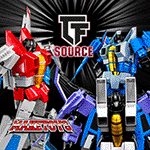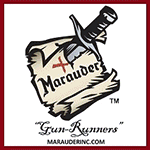|
|||||||
| Community Links |
| Social Groups |
| Pictures & Albums |
| Members List |
| Search Forums |
| Advanced Search |
| Go to Page... |
 |
|
|
Thread Tools |
|
|
#31 |
|
Ne Plus Ulta
Join Date: Jun 2009
Location: Brooklyn
Posts: 4,776
|
The Action Force version of the character is.
__________________

|
|
|

|
|
|
#32 |
|
Resident Aussie.
Join Date: Aug 2006
Location: Sydney, Australia
Posts: 819
|
Quote:

__________________
I do NOT Play with my toys! I do, however, occasionally engage in scale model assisted battle simulations. |
|
|

|
|
|
#33 |
|
Iron Grenadier
Join Date: May 2010
Location: Virginia
Posts: 827
|
Quote:
|
|
|

|
|
|
#34 |
|
Commando
Join Date: Jan 2013
Location: Britain
Posts: 3,827
|
In AF, Outback was Scottish and when I found that out later, (I didn't have the figure and never saw it in stores) I was very WTF?!?! He lived in the literal Outback in one story hunting the Dreadnoks!
|
|
|

|
|
|
#35 |
|
just a Marine
Join Date: Mar 2014
Location: central PA
Posts: 1,681
|
Quote:
 Later generation ECH high cut Type: Combat helmet In service: 2012 - present Designed: 2007 Manufacturer: Ceradyne and Gentex Produced: March 2012 - present Mass 3.3 lb (1.5 kg) Worned by; Heavy Artillery Roadblock, (the Classified Series #28) and Alvin "Breaker," Kibby, (the Classified Series #29) The ECH's profile is very similar to the Advanced Combat Helmet (ACH) but is thicker; they can be differentiated from the ACH by the different chinstrap. The ECH helmet's shell is made of an ultra-high-molecular-weight polyethylene (UHMWPE) material. The helmet provides 35% better protection against small-arms fire and fragmentation than the Advanced Combat Helmet, and it protects against certain rifle projectiles. The helmet is of the "tactical cut" type and thus offers less coverage but does enable better mobility. The helmet is compatible with camouflage fabric helmet covers.[5] The helmet has been shown nearly impenetrable to fragments fired by test guns. In a v50 test, guns were unable to attain the velocity required to get 50% of the fragments through a helmet.[6] The helmet's design allows for the addition of devices such as communications and night-vision equipment. The ECH has a 4-point chinstrap/napestrap head retention system. The Marine/Navy and Army variants are differentiated in that the Marine/Navy version uses an X-Back retention system (called the Class I) and the Army uses the H-Back retention system (called the Class II). A high cut variant of the ECH with side accessory rails and a contour similar to the Ops-Core FAST (Future Assault Shell Technology) helmet already in use by special operations forces was issued to Marine combat arms units beginning in 2021. Unlike in the earlier version of the helmet, the distinctive D-ring attachment at the jawline is not present in this design. Development In an effort led by the U.S. Army Research Laboratory (ARL),[8] ECH development began in 2007 under the Army Manufacturing Technology (ManTech) Program. In July 2009, more than $8 million was awarded to four vendors for five helmet designs. Mine Safety Appliances was awarded $4.7 million, Gentex Corporation was awarded $1.8 million, BAE Systems Aerospace & Defense Group was awarded $764,000, and 3M subsidiary Ceradyne was awarded $729,000. Testing in September revealed that each helmet failed in ballistic and/or blunt force tests. In February 2010, the Navy joined the program and issued their own requirements. Marine Corps officials suggested design improvements such as better materials to industry and testing resumed in June 2010. Three vendors were to be downselected, and the remaining two would be tested in November. If the program proceeded as planned the Army would acquire 200,000, the Marine Corps would acquire 38,500, and the Navy would acquire 6,700. Ceradyne won the competition to produce the Enhanced Combat Helmet in March 2012. In July 2013, the U.S. Marine Corps ordered 3,850 helmets for deployed Marines, to be fielded before the end of 2013. The Marine Corps plans to buy 77,000 helmets, enough to outfit a large contingent of deployed U.S. Marines. Fielding was scheduled to begin in October 2013. The Marine Corps' ultimate goal is to issue the ECH to all 182,000 Marines. The Army helmet fabrication goal was to develop an entirely new methodology for mass-producing complex shapes and combining layers of different thermoplastic materials. During this time, ARL and partners created a new molding technology, which included a manufacturing process reducing labor by 40% and waste by 70%. The ManTech program has also produced the Ops-Core FAST helmet, fielded by the Green Berets, the Navy SEALS, and other special operations forces. The FAST helmet offers 25% weight reduction; a derivative of the FAST helmet, known as the Maritime (MT), offers a 35% weight - reduction. The FAST helmet and its derivatives also use UHMWPE, and the technology includes new manufacturing processes developed at ARL, in collaboration with U.S. Army Natick Soldier Research, Development And Engineering Center and Program Executive Office (PEO) Soldier.[15] ARL and its partners received the Department of Defense Manufacturing Technology Program Achievement Award in 2009 for work on ECH. - https://en.m.wikipedia.org/wiki/Enha...(United_States) |
|
|

|
|
|
#36 |
|
just a Marine
Join Date: Mar 2014
Location: central PA
Posts: 1,681
|
|
|
|

|
|
|
#37 |
|
Commando
Join Date: Jan 2013
Location: Britain
Posts: 3,827
|
|
|
|

|
|
|
#38 |
|
Sergeant
Join Date: Aug 2008
Location: Virginia
Posts: 733
|
Quote:
 Personnel Armor System for Ground Troops Helmet In service 1983 - present (United States military reserve) 1985 - present (other countries) Used by: United States Air Force, (historical), United States Army (historical,) United States Army Reserve, United States Marine Corps (historical,) United States Navy Wars Invasion of Grenada (first usage) Invasion of Panama Persian Gulf War Battle of Mogadishu Yugoslav Wars Global War on Terrorism War in Afghanistan Iraq War Russo-Ukrainian War Designer: U.S. Army Soldier Systems Center Designed: 1977 (helmet) Manufacturer: Gibraltar Industries (first known helmet/vest manufacturer) Made by numerous manufacturers, such as Isratex, Inc. Variants: U.S. Navy Flak Jacket (Mk 1, Mod 0) Worn by: Bazooka, Breaker, (v1, v2) Clutch, Col. Courage, Duke, Dusty, Flash, Footloose, Grandslam, Grunt, Hawk, (v1) Rapid Fire, (v1 and Hall of Fame Series,) Roadblock, (v1) Scarlett*, Short-Fuze, Steeler, Zap Personnel Armor System for Ground Troops (PASGT, pronounced /ˈp?zɡət/ PAZ-gət) is a combat helmet and ballistic vest that was used by the United States military from the early 1980s until the mid-2000s, when the helmet and vest were succeeded by the Lightweight Helmet (LWH), Modular Integrated Communications Helmet (MICH), and Interceptor Body Armor (IBA) respectively. Designed in the mid-1970s as a replacement for the M1 helmet and previous fragmentation vests, prototypes of the PASGT were tested in the late 1970s before being fielded in the early 1980s. In the early 2000s, the PASGT vest began being replaced by the IBA and the PASGT helmet was replaced soon thereafter with the LWH and MICH. As of 2018, the only remaining U.S. military users of PASGT in any capacity are the U.S. Army Reserve and the U.S. Navy, the latter of which retains the PASGT helmet for use by sailors aboard its warships, in addition to a PASGT-derived vest known as the "U.S. Navy Flak Jacket". PASGT is an acronym, standing for Personnel Armor System for Ground Troops. When used by itself, PASGT refers to both the vest and helmet together. In the U.S. military, the PASGT helmet was most commonly known by its wearers as simply the "Kevlar". The nickname has since been adopted for usage with other helmets. The PASGT helmet was also referred to by its wearers in the U.S. military as the "K-pot", similar in name to the colloquial nickname "steel pot" for the steel M1 helmet, which was in widespread U.S. military usage from the 1940s, to the 1970s, including the Vietnam War. The PASGT helmet was also, but less commonly, known by its wearers as the "Fritz" helmet for its resemblance to the Stahlhelm, which was the standard helmet used by the German military forces in the First and Second World Wars.  . .An early prototype variant of the PASGT helmet and vest in the ERDL pattern. The PASGT helmet is a combat helmet first employed by the U.S. military in 1983 and eventually adopted by many other military and law enforcement agencies internationally. The shell is made from 19 layers of Kevlar, a ballistic aramid fabric treated with a phenolic resin system, and is rated at Threat Level IIIA. The helmet and offers protection against shrapnel and ballistic threats. It meets the 1800 requirement of MIL-STD-662 E. It weighs from 3.1 lb (1,410 g) (size extra small) to 4.2 lb (1,910 g) (extra large).  U.S. Navy sailors in January 2017 wearing the PASGT helmet. Overview The PASGT helmet is typically painted olive drab, though other colors such as tan, grey, and black could also be used. Camouflage was available in the form of cloth helmet covers with varying camouflage patterns, such as woodland, six-color desert, and three-color desert. Some PASGT helmets were retrofitted with newer camouflage colors, such as the Universal Camouflage Pattern and MultiCam. Outside military use, the PASGT helmet has been used by SWAT teams, where it is often painted black. It has also been used by United Nations Peacekeeping forces, where it is often painted United Nations blue. When worn with a helmet cover, the PASGT helmet is often fitted with a band around it that has two light recharging glow patches (sometimes known as "cat eyes") on the rear, intended to reduce friendly fire incidents. These bands are also used to hold vegetation or small personal items, as with the M1 helmet before it. These bands can have names and blood types printed on them to identify the wearer and their blood type in the event of a casualty. In the U.S. Army, PASGT helmets often featured a patch with the wearer's rank insignia on it stitched onto the front, and/or a second patch showing the symbol of the wearer's unit on the sides. The U.S. Marines wore the Eagle, Globe, and Anchor insignia on the front of the helmet as an iron-on transfer, similar to the one worn by Marines on the breast pocket of the BDU. This practice continued with the adoption of the LWH, but fell out of use and was discontinued because the mounting base for night vision devices covered the emblem, and required a hole in the fabric to attach, defacing the symbol. Development The PASGT helmet was developed by the U.S. Army Soldier Systems Center[10] after the Vietnam War during the mid-to-late 1970s. It completely replaced the steel M1 helmet in U.S. military service by the end of the 1980s. It first saw use in combat in 1983 during Operation Urgent Fury in Grenada, became standard issue for the U.S. military in 1985, and completely replaced the M1 helmet for frontline troops by the end of the decade. Army units stationed in Alaska were the last to receive the helmets, some not getting the PASGT until 1988. Accessories Various add-on accessories were developed for the PASGT helmet, including a helmet mount assembly to attach night vision goggles and a riot protection helmet visor mount. Replacement The PASGT helmet was replaced in U.S. military service by the Lightweight Helmet for the U.S. Marine Corps and the Modular Integrated Communications Helmet by the U.S. Army, which was in turn replaced by the Advanced Combat Helmet. Both were eventually replaced by the Enhanced Combat Helmet (ECH) around 2012 and 2014. The PASGT system is still used by some U.S. allies and still sees some continued limited use in the U.S. military as of 2017, where it serves as one of various vests for sailors assigned to duty aboard U.S. Navy vessels. - https://en.m.wikipedia.org/wiki/Pers..._Ground_Troops *Scarlett wore a mustard colored PASGT helmet in the early issues of the Marvel run.  Schwarzkopf's helmet, a PASGT, represents "how technology and innovation work together in the field of ground-forces protection,? says Frank Blazich, Jr., the Smithsonian's curator of modern military forces. Known as PASGT (for Personal Armor System Ground Troops), the helmet was introduced to the U.S. ground forces in the years following the Vietnam conflict and was initially employed in limited numbers during actions in Grenada and Haiti in the 1980s. It was in wide use by American ground forces by the time Operation Desert Storm was initiated in 1991, when U.S. forces led a coalition of 34 nations to liberate Kuwait after its occupation by Iraq in August of 1990. In 1965, DuPont chemist Stephanie Kwolek invented Kevlar. That was a game-changer, says Blazich. In the 1970s, several Army agencies?led by the Army Natick Development Center at the Watertown Arsenal in Massachusetts?began work using layers of tough, puncture-resistant Kevlar 29, a synthetic ballistic fiber bonded with a synthetic polymer resin, to create a helmet capable of stopping most bullets, as well as shrapnel and shell fragments in a skull protecting device that weighed between 3.1 (for the small model) and 4.2 pounds (for the extra-large size). Because of the malleability and plasticity of Kevlar in the design process, the Army and its agencies were able to make a far more efficient helmet design, creating the PASGT, similar to the one General Schwarzkopf donated to the Smithsonian in 2007. Its design also allowed for coverage of the ears and the back of the skull all the way to the nape of the neck. Though some of the American troops referred to it as the K Pot, referring to its outer Kevlar material, others called it the Fritz for its resemblance to the scallop-edged Stalhelm helmet worn by German soldiers in both World Wars. But despite the disparaging nickname, the PASGT's protective qualities, due to the Kevlar exterior, proved a vast protective improvement over the M1. While still not perfect at stopping close-range bullets and shrapnel and shell fragments, the helmet?s provision of safety was recognized as a quantum protective leap forward. First used combat in Operation Urgent Fury in Grenada in 1983, by the time Operation Desert Storm came around in 1991, it was welcomed as standard equipment until the PASGT, too, was replaced by a new model in 2003. https://www.smithsonianmag.com/smith...eld-180963319/  The Personnal Armor System Ground Troops, or PASGT, used from 1979-2003, replaced steel construction.  The PASGT replaced the M1 steel constructed helmet.  The PASGT is constructed of 17 layers of Kevlar-brand aramid fiber treated with phenolic resin.
__________________
Acts 13:41 KJV [41] Behold, ye despisers, and wonder, and perish: for I work a work in your days, a work which ye shall in no wise believe, though a man declare it unto you. John 3:16 KJV [16] For God so loved the world, that he gave his only begotten Son, that whosoever believeth in him should not perish, but have everlasting life. |
|
|

|
|
|
#39 |
|
Destined to Conquer
Join Date: Oct 2022
Location: Freusenland Terror Drome
Posts: 202
|
The good ol’ K pot!
|
|
|

|
 |
«
Previous Thread
|
Next Thread
»
 Similar Threads
Similar Threads
|
||||
| Thread | Thread Starter | Forum | Replies | Last Post |
| Joe weapons and their real life counterparts... | Cobra Agent 66 | G.I. Joe General Discussion | 500 | 03-24-2024 11:24 AM |
| Joe vehicles and their real life counterparts. | Starfighter | G.I. Joe General Discussion | 223 | 05-22-2023 10:42 PM |
| Building a Real H.I.S.S. Tank – From Concept To Real-Life | TheGabrielAngel | G.I. Joe Live Action Movie | 9 | 12-08-2018 01:44 PM |
| The New Real Life V.A.M.P. 2!!! | Starfighter | G.I. Joe General Discussion | 11 | 04-21-2012 06:59 PM |
| Real Life Military Equipment | minstrelboy | General Discussion | 12 | 04-06-2008 07:45 PM |
|
|
All times are GMT -4. The time now is 06:36 PM.
Powered by vBadvanced CMPS v%1$s
Powered by vBulletin
Copyright ©2000 - 2024, Jelsoft Enterprises Ltd.
Copyright ©2000 - 2024, Jelsoft Enterprises Ltd.











